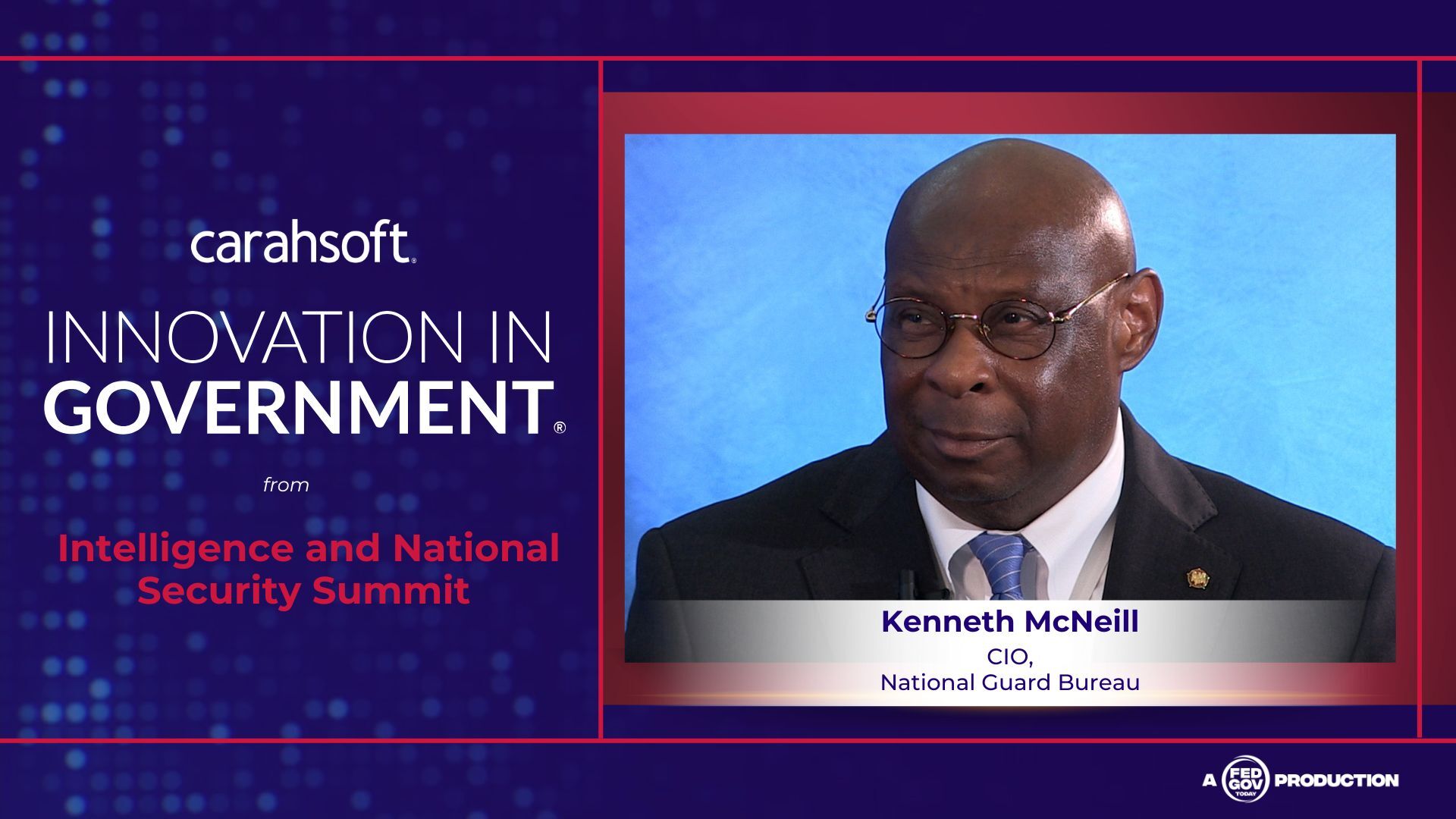Original broadcast 9/17/25
Presented by Carahsoft
Modern warfare is no longer defined solely by tanks, ships, or planes. The information space—where cyber operations, electronic warfare, influence campaigns, and public perception intersect—has become just as critical to national defense. Colonel John Agnello, Commander of the 2nd Theater Information Advantage Detachment (TIAD) at Army Cyber Command, describes how the Army is building new organizations to give commanders an edge across the “competition continuum” of competition, crisis, and conflict.
The Army has stood up three Theater Information Advantage Detachments, each tailored to a major theater of operations. One is focused on the Pacific, one on Europe, and the 2nd TIAD supports Army Cyber Command’s global mission. These units were created to provide commanders with an integrated capability to understand, shape, and operate in the information domain—a space where adversaries are constantly active, even outside of armed conflict.
Colonel Agnello explains that the information dimension is now treated alongside the physical and human dimensions of the operational environment. While traditional military power has always prioritized physical capabilities and human factors, information has emerged as a decisive layer that can sway public opinion, disrupt decision-making, and set conditions before a battle even begins. Adversaries, from peer competitors to non-state actors, routinely operate in this domain. The Army’s TIADs ensure U.S. commanders can respond and, ideally, stay ahead.
To achieve this, the detachments bring together a range of specialized disciplines: cyber operations, electronic warfare, psychological operations, civil affairs, and public affairs. By converging these capabilities, TIADs can analyze, visualize, and act on information in ways that were previously fragmented. For example, a civil affairs officer might identify local infrastructure vulnerabilities, a psychological operations team could craft influence campaigns, while cyber and electronic warfare operators could target adversary communications—all synchronized under one commander’s objectives.
 Colonel Agnello stresses that the information environment is far more than social media. While platforms like Twitter or Facebook play a role, real information advantage comes from understanding what populations need and believe at the local level. That means putting people on the ground who can assess water, power, and basic services, as well as employing public affairs officers who communicate effectively with domestic and foreign audiences. It also means cyber and electronic warfare teams must be able to act quickly to secure networks, deny adversary operations, or create effects that shape the environment.
Colonel Agnello stresses that the information environment is far more than social media. While platforms like Twitter or Facebook play a role, real information advantage comes from understanding what populations need and believe at the local level. That means putting people on the ground who can assess water, power, and basic services, as well as employing public affairs officers who communicate effectively with domestic and foreign audiences. It also means cyber and electronic warfare teams must be able to act quickly to secure networks, deny adversary operations, or create effects that shape the environment.
Exercises in both the Pacific and European theaters have helped refine this model. In the Pacific, where vast distances separate island chains, presence and agility are paramount. TIAD operations there must account for the “tyranny of distance” by positioning forces close to partners and allies. In Europe, by contrast, the focus is often on working side by side with NATO allies and integrating effects across land-dominant terrain. The different geographies demand different approaches, but the core mission—converging information-related capabilities—remains the same.
One of the greatest challenges, Colonel Agnello notes, is visualizing the information space. Unlike a battlefield map with physical terrain, the information environment is abstract. Developing tools and methods that help commanders see how narratives spread, how populations are influenced, and how adversaries are acting online and offline is crucial. TIADs are experimenting with technologies and processes that transform raw data into actionable insight, enabling faster and better decisions.
The importance of this work is underscored by the Army’s focus on the competition continuum. In an era where adversaries employ gray-zone tactics—shaping conditions short of open conflict—the Army must be able to compete effectively in the information space long before crisis or conflict erupts. TIADs ensure commanders are not just reacting to adversary moves but proactively shaping the environment.
Colonel Agnello sees the detachments as both operational assets and learning organizations. Each exercise or real-world mission generates lessons about structure, required skill sets, and technologies. Those lessons then inform how TIADs are staffed and equipped for future missions. Over time, this iterative approach will refine the Army’s ability to deliver information advantage in any theater.
In his words, the Army is moving beyond the idea that information operations are an adjunct to traditional warfare. Instead, they are core to achieving success across the full spectrum of conflict. By integrating diverse capabilities and focusing on the commander’s decision advantage, the Theater Information Advantage Detachments are pioneering how the Army fights in the 21st century.



